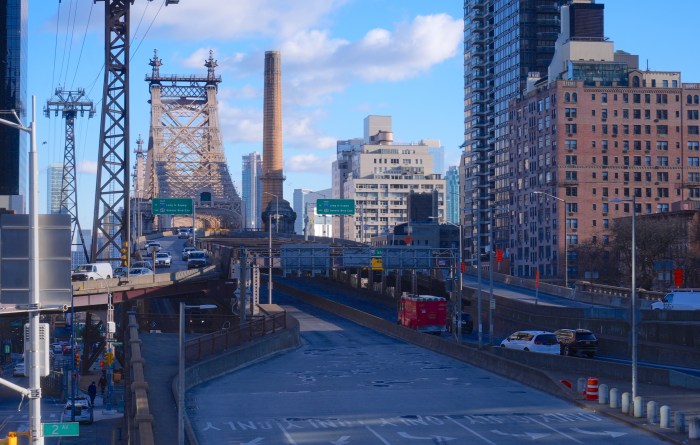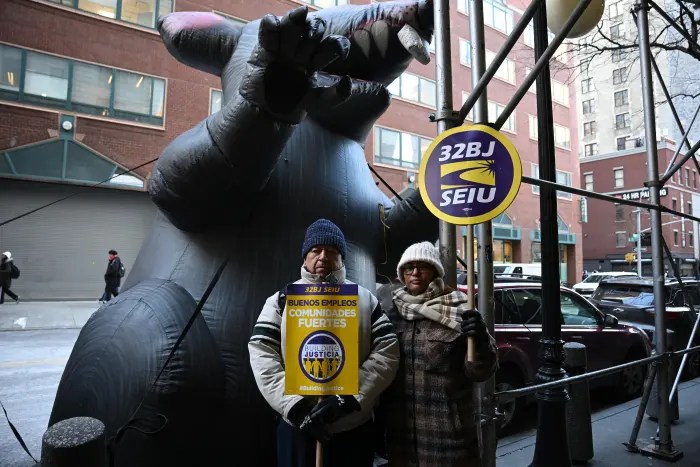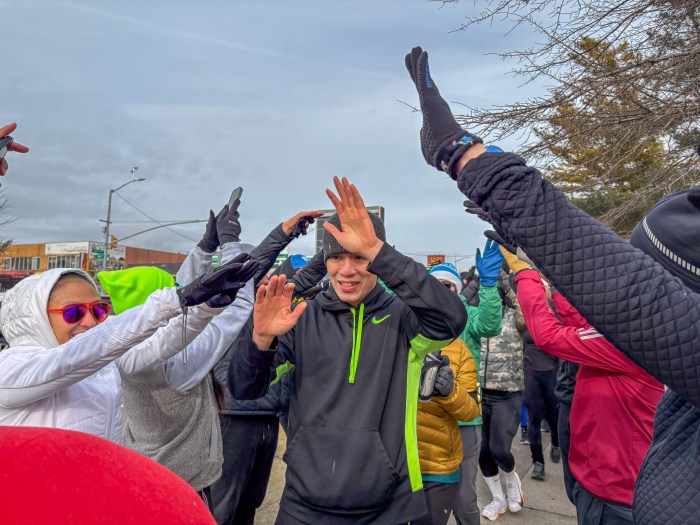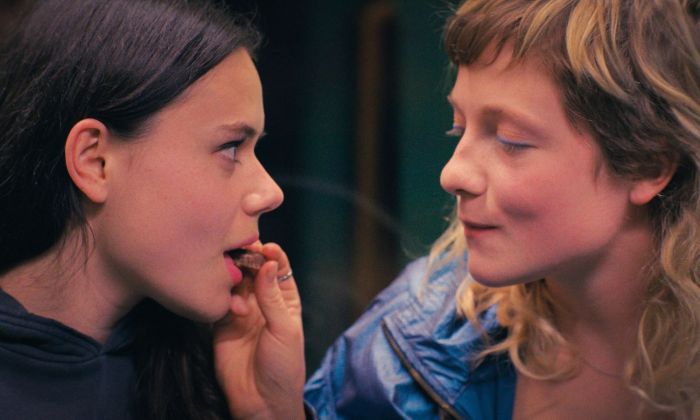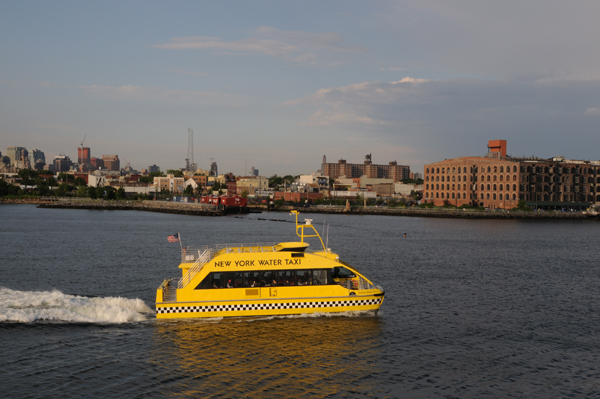
BY TERESE LOEB KREUZER | Red Hook, a point of land in Brooklyn that juts into New York City’s Upper Bay, was hard hit by Superstorm Sandy. But now the city has thrown Red Hook a lifeline. On weekends through Labor Day, 10 a.m. to 9 p.m., a free New York Water Taxi ferry runs every 25 minutes from Pier 11 at the foot of Wall St. to Van Brunt St. in Red Hook and then on to the IKEA store.
In announcing the service, Mayor Michael Bloomberg said that the purpose is to make it “easier than ever for New Yorkers to get to small businesses in the area in order to help the community continue to recover.”
The new service, which began May 25, supplements a paid ferry ($5 a ride) that runs during the week from 2 p.m. to 8 p.m. and a free service that had been running on weekends every 40 minutes between Pier 11 and IKEA. With a second boat on the route, service will now be more frequent and make an additional stop near the Fairway food market. At Wall St., the Red Hook ferry will connect with the East River Ferry, with free transfers for passengers who want to go to midtown Manhattan.
Though IKEA sailed through Sandy with little damage, the neighborhood’s other giant, Fairway, was flooded and had to close for four months. Its mom-and-pop stores and restaurants struggled to survive — and some didn’t make it. The city will pick up the tab for the expanded weekend service with partner sponsorship from Fairway Market and assistance from IKEA.
The Red Hook summer ferry is the result of a partnership between New York Water Taxi; Billybey Ferry Company, which operates the East River Ferry; Fairway Market; IKEA; and the O’Connell Organization, which owns the pier from which the Red Hook ferry will operate.
“There’s really nothing like approaching Red Hook from the water,” said St. John Frizell, an award-winning food and drink writer. “You get a feel for the maritime nature of the community, and hands-down best views of the Statue of Liberty.”
For centuries, Red Hook’s existence and fortunes revolved around the river and the sea, initially because of tidal mill ponds created by the Dutch who settled there in the early 1600s. After construction of the Erie Canal connected New York City with the grain-rich Midwest, entrepreneurs built the Atlantic and Erie basins in Red Hook to accommodate the cargo.
By the 1920s, Red Hook was the busiest freight port in the world. However, the shipping business declined with the advent of containerization in the 1960s.
Now, with Cunard’s ocean liner, Queen Mary 2, docking there and numerous artists reclaiming Red Hook’s warehouses, Red Hook’s historic buildings are home to a growing number of boutiques selling (among other things) antiques, jewelry, home furnishings, and restaurants.
“After Hurricane Sandy, we learned that the East River can bring heartache, devastation and loss of business but if the ferry lands at Van Brunt St. this summer, the East River will also be responsible for bringing profits back to businesses and the assurance of survival and progress within this community,” said Triciann Botta, owner of Botta di Vino on Van Brunt St.
Not far from Van Brunt, Red Hook also has a museum — the Waterfront Museum — housed aboard the 1914 Lehigh Valley barge No. 79. The museum’s president, David Sharps, stayed aboard the wooden barge throughout Sandy, and with the help of two crew members, managed to save it. Visitors get to see the captain’s living quarters, the tools used by longshoremen and stevedores and the gongs and bells of the tug and barge system. The barge is open on Saturday afternoons from 1 p.m. to 5 p.m. with admission by donation.





